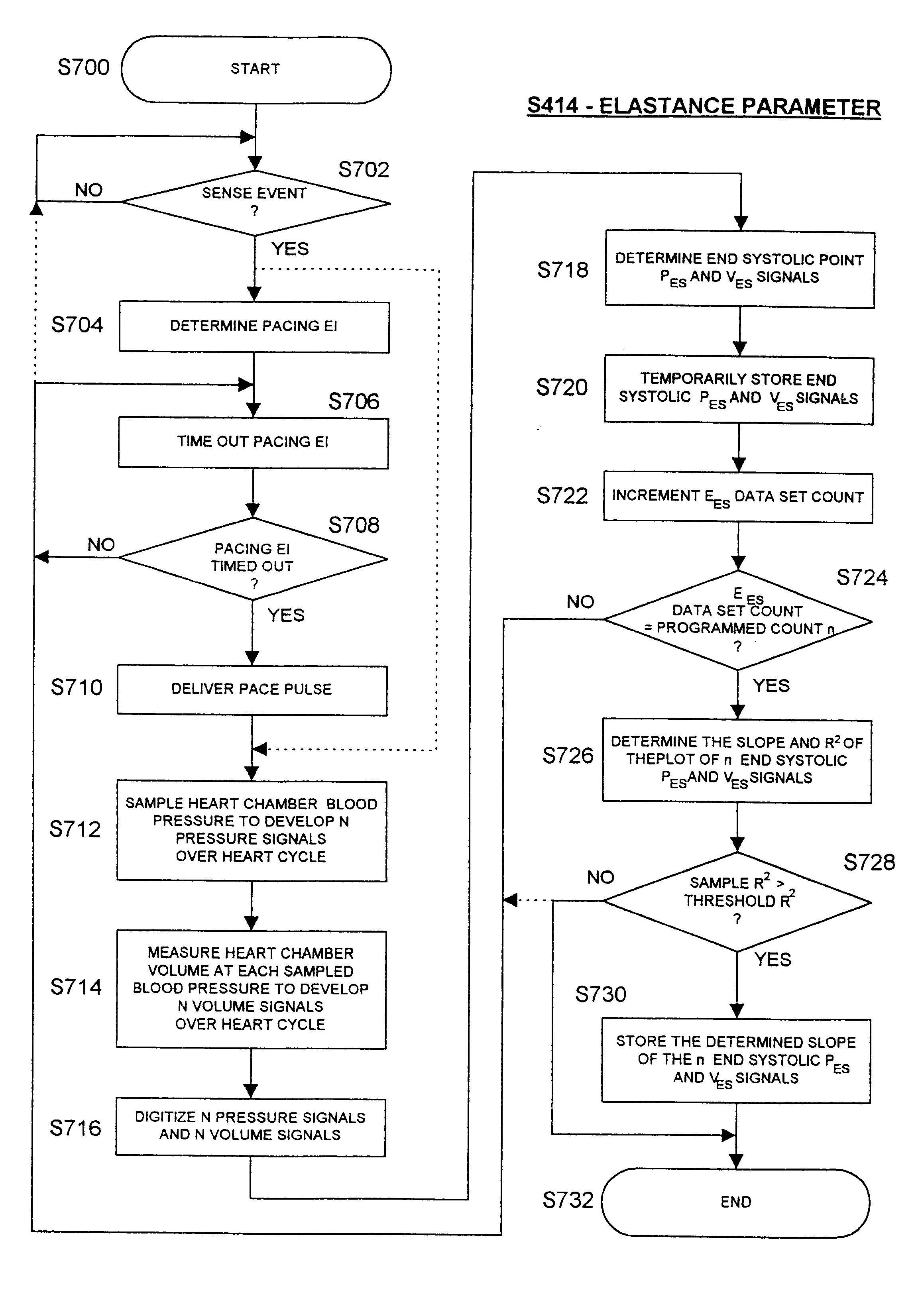Implantable medical device for treating cardiac mechanical dysfunction by electrical stimulation
a technology of electrical stimulation and medical devices, applied in the field of implantable medical devices, can solve problems such as cardiac mechanical dysfunction, cardiac mechanical dysfunction, acute or chronic, and achieve the effects of improving contractility, relaxation, pressure or cardiac outpu
- Summary
- Abstract
- Description
- Claims
- Application Information
AI Technical Summary
Benefits of technology
Problems solved by technology
Method used
Image
Examples
Embodiment Construction
In the following detailed description, references are made to illustrative embodiments for carrying out the invention. It is understood that other embodiments may be utilized without departing from the scope of the invention.
Before describing the preferred embodiments, reference is made to FIG. 22 reproduced from the above-referenced '464 patent which depicts the electrical depolarization waves attendant a normal sinus rhythm cardiac cycle in relation to the fluctuations in absolute blood pressure, aortic blood flow and ventricular volume in the left heart. The right atria and ventricles exhibit roughly similar pressure, flow and volume fluctuations, in relation to the PQRST complex, as the left atria and ventricles. It is understood that the monitoring and stimulation therapy aspects of this invention may reside and act on either or both sides of the heart. The cardiac cycle is completed in the interval between successive PQRST complexes and following relaxation of the atria and ve...
PUM
 Login to View More
Login to View More Abstract
Description
Claims
Application Information
 Login to View More
Login to View More - R&D
- Intellectual Property
- Life Sciences
- Materials
- Tech Scout
- Unparalleled Data Quality
- Higher Quality Content
- 60% Fewer Hallucinations
Browse by: Latest US Patents, China's latest patents, Technical Efficacy Thesaurus, Application Domain, Technology Topic, Popular Technical Reports.
© 2025 PatSnap. All rights reserved.Legal|Privacy policy|Modern Slavery Act Transparency Statement|Sitemap|About US| Contact US: help@patsnap.com



